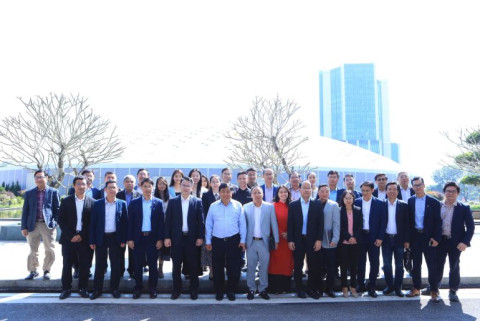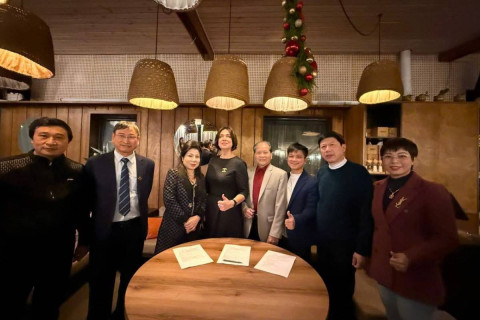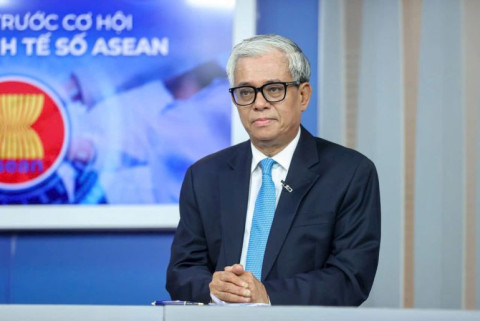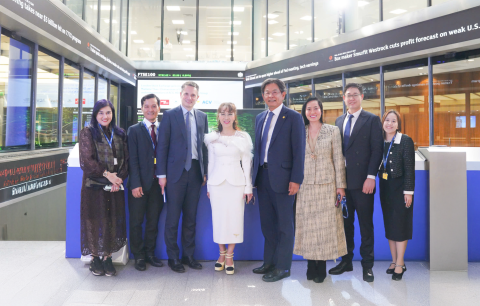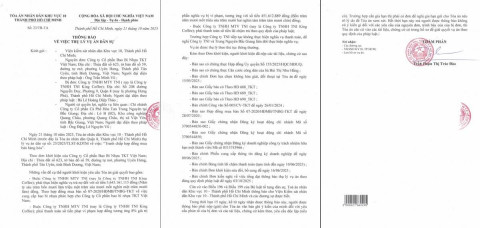Possible pathways for Viet Nam to reach net zero target
- 143
- Business
- 11:41 04/06/2022
DNHN - VGP - The Danish Energy Agency, the Electricity and Renewable Energy Authority under the Ministry of Industry and Trade, and the Danish Embassy jointly released the Viet Nam Energy Outlook Report 2021 (EOR21) with eight findings and recommendations for Viet Nam to reach the net zero target by 2050.
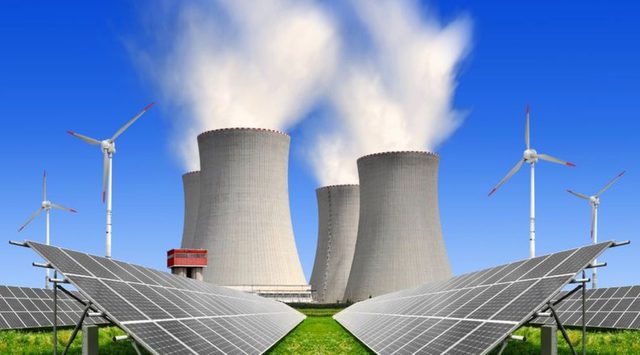
Under the expected economic and population growth, the Viet Nam's future energy demand is expected to increase.
This requires a fast development of the Vietnamese energy system and causes new challenges, which are covered by the themes in EOR21 including Energy system costs/affordable energy, the need for additional transmission capacity, dependency on fuel import, and air pollution.
Reduced reliance on fuel imports and lower import costs
Firstly, it is possible to reach a net zero emissions energy system in 2050 at an extra cost of only 10% compared to the baseline scenario if done right. Early actions are required to make emissions peak no later than in 2035 to avoid paying excessive costs.
Secondly, to reach net zero emissions by 2050 at least cost, renewable electricity should be the main substitute for fossil fuels, either directly, or indirectly through production of electro-fuels. The power system is expected to satisfy 70% of the total energy demand in 2050. The primary sources of RE-based power production are solar (75%) and wind (21%).
Thirdly, the green transition of the power system will be very capital-intensive and could require annual investments of up to US$ 167 billion USD in 2050 in the NZ scenario, corresponding to around 11% of the projected national GDP in 2050.
Power system costs will shift towards less fuel costs and much more capital investment costs. Capital investment costs are around 50% of total power system costs in 2030 in all scenarios while towards net zero in 2050 it increases to 90% of the total power system costs. Therefore it is crucial to achieve access to cheap financing options.
Fourthly, Viet Nam should stop planning new coal-fired power plants and refurbish existing plants to become more flexible to better integrate renewables. Furthermore, it is recommended to limit the expansion of gas and LNG-fired power plants as the current planned 25 GW capacity is more than sufficient to reach net zero emissions in 2050.
Fifthly, to reach net zero in 2050, storage systems should play a central role, but only after 2030 is battery necessary and cost efficient.
Batteries are still expensive today and not needed in Viet Nam in the short term as balancing can be provided by existing hydro and thermal power plants.
In the coming 10 years, reinforcement of transmission capacity is urgently needed, especially to connect the best renewable resource in South with demand in the North.
Sixthly, nuclear power is only cost-efficient if the implementation of renewable energy, particularly solar energy is severely constrained.
The analysis shows that current nuclear power technologies are not cost-competitive with the combination of solar, wind, storage, and transmission. Only when these technologies are prevented from being fully utilised, for example because of constraints on access to land, nuclear power can be competitive towards net zero in 2050.
For example, if only half of the land area of 11,000 km2 solar energy potential is available in the NZ, there will be a need for 35 GW of nuclear power.
Seventhly, early action is needed to decarbonise the transport sector. Additional benefits are much less air pollution and less dependency on fuel import.
Direct electrification is key – around 80% and 50% of passenger and freight demand respectively should be electrified in 2050.
Viet Nam should start phasing out vehicles using fossil-fuels from 2025, switch to collective transport modes, and shift freight transport towards railway from 2030 and electrify all land transport.
Eighthly, reaching net zero will make Viet Nam independent of fuel import.
Viet Nam's import dependency is expected to increase significantly in the next decade and by 2050, the share of imported fuels can reach 70% in the baseline scenario with imported fuel costs corresponding to US$ 53 billion.
Lowering fuel imports will reduce risks related to fuel price variations.
The analysis shows that a price increase of 20% leads to a 50% reduction in the use of LNG in the power sector in the BSL scenario.
An even higher LNG price will lead to even lower need for LNG. By reaching net zero emissions in 2050, the long-term energy security can be substantially enhanced by greatly reduced reliance on fuel imports and lower import costs.
By reaching net zero emissions in 2050, the long-term energy security can be substantially enhanced by greatly reduced reliance on fuel imports and lower import costs. The NZ scenario reaches an almost self-sufficient energy supply in 2050.
en.baochinhphu.vn
Related news
- From New Year messages of World Leaders to the “new rules” of the Global economy in 2026
- Connecting Leaders, Shaping the Future: Strategic Leadership Planning Meeting – CorporateConnections Hanoi A
- Sunlight - Unilever Vietnam Recognized for Outstanding Contributions to the National Initiative Supporting Women Entrepreneurs
- Deputy Prime Minister Nguyễn Chí Dũng: “The country’s major challenges weigh heavily on my mind — and we must resolve them together.
- Unitsky String Technologies signs cooperation agreements with three Vietnamese partners, opening a new direction for smart mobility and sustainable development
- When artists do business – livelihood is no poetry!
- Before the D‑day to abolish flat‑rate tax: Fear of technology and costs leave small traders struggling to adapt
- Vietnamese enterprises at a crossroads: the impact of a potential US–China deal
- "Digital technicians" must not be forgotten if Vietnam aims to meet its strategic goals
- HDBank: Impressive profit growth, leading in profitability and advancing international integration
- TNI King Coffee sued for over VND 5 Billion in unpaid debts
- VINASME and Jeonnam Technopark Sign MOU on technology cooperation, human resource training, and trade promotion
- Vietnamese entrepreneurs strengthen ASEAN connectivity in the digital iIntegration era
- Prime Minister: Vietnam aims to become a regional logistics hub
- Vietnam upgraded to Secondary Emerging Market by FTSE Russell
- Hanoi’s economy grows 7.92% in first nine months of 2025, FDI surges nearly threefold
- Vietnam’s strong gdp growth fails to ease labor market distress
- US tariffs on Brazil propel Vietnam’s pangasius into global spotlight
- VietLeap AI Accelerator launches: A strategic springboard for Vietnam’s AI startups
- CICON expands strategic alliances: A new step forward in Vietnam–Korea business connectivity
#net zero target
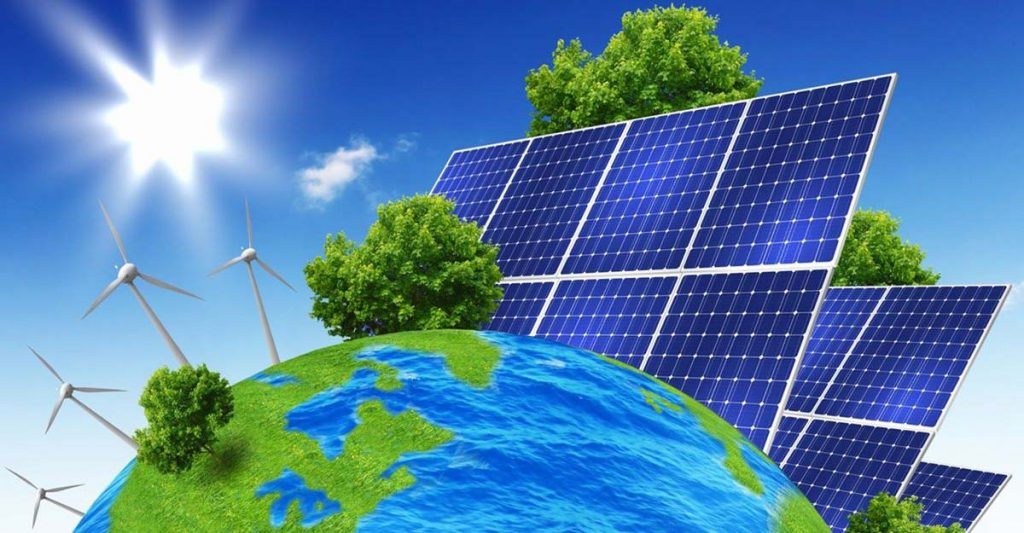
Renewable energy: Opportunities and challenges for the NetZero 2050 goal
Renewable energy is emerging as a key sector in Vietnam, reflecting the government's strong commitment to reducing greenhouse gas emissions.
Đọc thêm Business
From New Year messages of World Leaders to the “new rules” of the Global economy in 2026
At a pivotal moment of transition, New Year messages from capitals such as Hanoi, Beijing, Washington and Paris reflect distinct priorities and strategic visions.
Connecting Leaders, Shaping the Future: Strategic Leadership Planning Meeting – CorporateConnections Hanoi A
"Your network is your most powerful flowing asset. It generates value, multiplies opportunities, and accelerates your influence across borders."
Innovative ESG enterprise: Trạm Xe Việt startup proposes solutions to build a green mobility ecosystem
As Vietnam commits to achieving Net Zero by 2050 and tightens emissions standards, the transportation sector faces unprecedented pressure to transform.
Deputy Prime Minister Nguyễn Chí Dũng: “The country’s major challenges weigh heavily on my mind — and we must resolve them together.
On the morning of November 26, 2025, Deputy Prime Minister Nguyễn Chí Dũng chaired a high-level working session at the National Innovation Center (NIC) in Hòa Lạc.
Unitsky String Technologies signs cooperation agreements with three Vietnamese partners, opening a new direction for smart mobility and sustainable development
The signing ceremony took place in Minsk, Belarus, on November 28, 2025.
Before the D‑day to abolish flat‑rate tax: Fear of technology and costs leave small traders struggling to adapt
From 1 January 2026 the flat‑rate tax regime will be abolished. Small business households will be required to declare tax based on actual revenue. MISA supports the transition with technology to help micro‑merchants adapt smoothly and transparently.
Vietnamese enterprises at a crossroads: the impact of a potential US–China deal
As the world closely monitors every shift in US-China relations, emerging signals of a strategic agreement between the two global powers are raising hopes for global economic stability.
HDBank: Impressive profit growth, leading in profitability and advancing international integration
Ho Chi Minh City Development Joint Stock Commercial Bank (HDBank, stock code HDB) announced its consolidated profit before tax for the first 9 months of 2025 reached VND 14,803 billion, marking a 17% increase year-on-year (YoY).
TNI King Coffee sued for over VND 5 Billion in unpaid debts
On October 21, 2025, the People’s Court of District 10 in Ho Chi Minh City officially accepted a civil lawsuit concerning a commercial contract dispute between TKT Vietnam Plastic Packaging Joint Stock Company and TNI King Coffee Co., Ltd.
VINASME and Jeonnam Technopark Sign MOU on technology cooperation, human resource training, and trade promotion
On October 15, 2025, in Hanoi, VINASME and Jeonnam Technopark (Korea) signed an MOU to promote trade, advance technology transfer, and develop human resources between enterprises of both nations.





